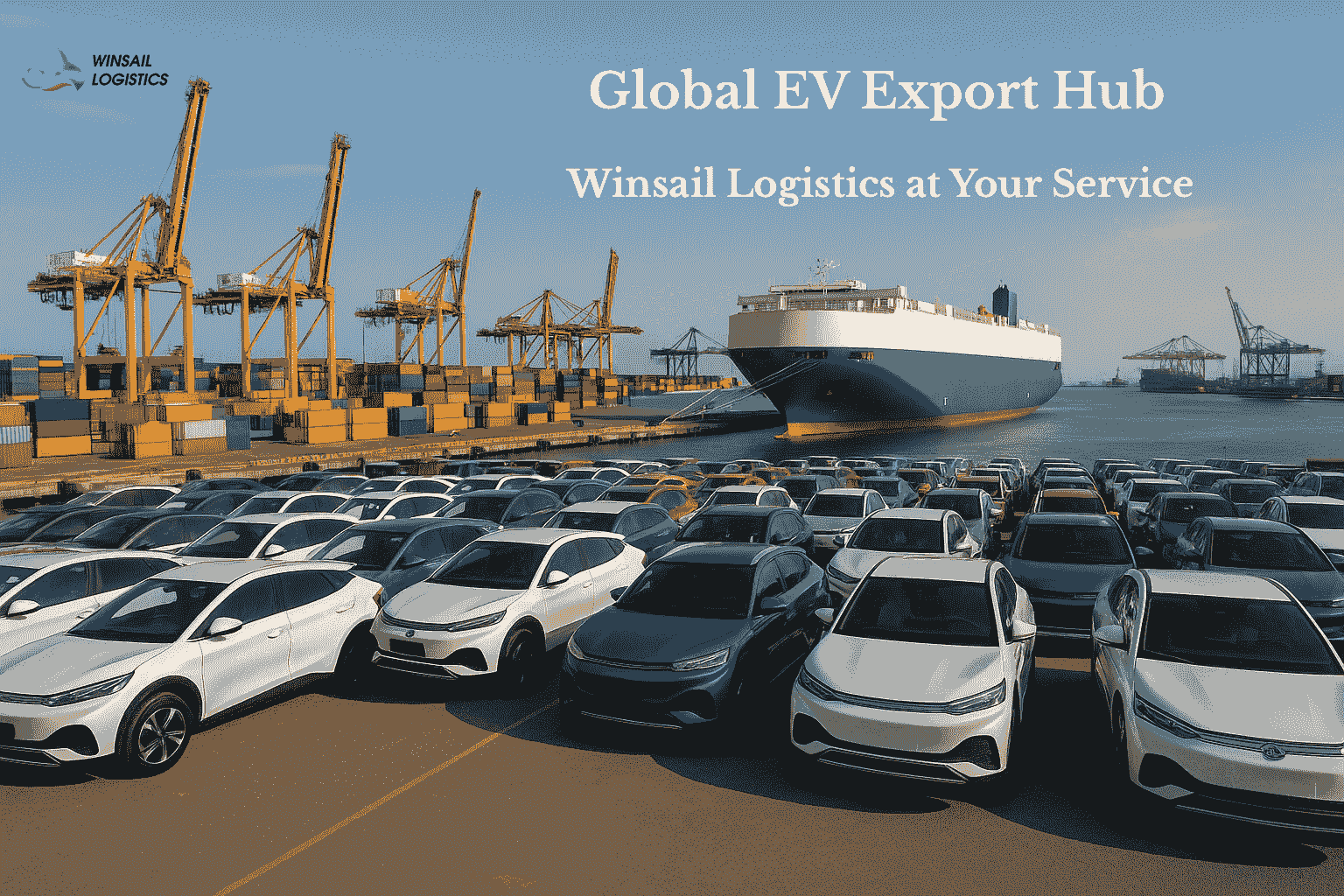
The global shift toward sustainable transportation has propelled new energy vehicles (NEVs)—including electric cars, hybrid models, and hydrogen fuel cell vehicles—into the forefront of international trade. As demand surges across Europe, North America, and emerging markets, exporters face unique challenges in navigating regulatory compliance, logistical complexity, and supply chain risks. For companies venturing into NEV exports, meticulous planning and specialized logistics solutions are critical to ensuring seamless operations. This blog outlines key precautions, procedural steps, and best practices for exporting NEVs, with a focus on optimizing transport modes like RoRo (Roll-on/Roll-off) ships and full container load (FCL) services.
1. Understanding the Regulatory Landscape
Exporting NEVs demands adherence to a mosaic of international regulations, which vary by destination country. Key considerations include:
- Battery Safety Certifications: Lithium-ion batteries, integral to NEVs, are classified as dangerous goods under IATA and IMO guidelines. Exporters must secure certifications like UN 38.3 (for battery transport) and MSDS (Material Safety Data Sheet) compliance.
- Emission and Efficiency Standards: Target markets such as the EU enforce stringent CO2 emission limits (e.g., Euro 6 for passenger vehicles) and require WLTP (Worldwide Harmonized Light Vehicles Test Procedure) certification.
- Customs and Tariff Codes: NEVs often qualify for reduced tariffs under free trade agreements (e.g., EVs imported into the EU under the EU-Japan EPA). Accurate HS code classification (e.g., 8703.80 for electric cars) is vital to avoid delays.
- Local Incentives and Restrictions: Some countries offer tax breaks for NEV imports (e.g., Norway’s VAT exemption), while others impose restrictions on used EV imports.
Pro Tip: Partner with a logistics provider specializing in NEV logistics solutions to navigate country-specific nuances.
2. Selecting the Right Transport Mode
The choice between RoRo ships and FCL containers hinges on cost, security, and vehicle type.
A. RoRo Shipping: Efficiency for High-Volume NEV Exports
RoRo vessels are designed for wheeled cargo, offering cost-effective transport for large batches of NEVs. Advantages include:
- Faster Loading/Unloading: Vehicles are driven directly onto the ship, reducing handling risks.
- Scalability: Ideal for bulk shipments to major ports (e.g., Rotterdam, Shanghai).
- Cost Efficiency: Lower per-unit costs for high-volume orders.
Precautions:
- Port Infrastructure: Ensure the origin and destination ports have RoRo facilities.
- Weather Risks: RoRo ships are more exposed to rough seas, potentially damaging vehicles.
- Security: Open decks increase vulnerability to theft or vandalism.
B. FCL Containers: Security for High-Value or Niche NEVs
For luxury EVs, prototypes, or low-volume shipments, FCL containers provide enhanced protection:
- Damage Prevention: Vehicles are secured within steel containers, shielding them from weather and theft.
- Customization: Containers can be modified with racks for multiple vehicles or charged batteries during transit.
- Flexibility: Suitable for inland transport via rail or trucks after ocean freight.
Precautions:
- Weight Limits: Standard 40ft containers have a payload capacity of ~26 tons, which may limit battery-heavy EVs.
- Cost: FCL is pricier per unit but justified for high-value cargo.
Case Study: A German automaker exporting hydrogen fuel cell trucks to Japan opted for FCL containers to prevent hydrogen tank damage during RoRo handling.
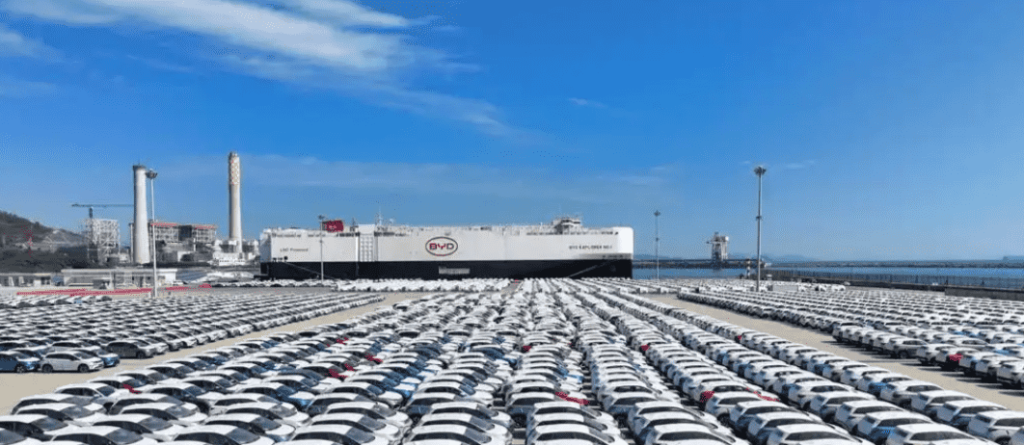
3. Packaging and Handling Best Practices
NEVs require specialized packaging to mitigate risks during transit:
- Battery Disconnection: Disconnect high-voltage batteries and affix warning labels per IMDG Code.
- Charging Levels: Maintain batteries at 30–50% charge to comply with airline regulations (for air freight) and prevent degradation.
- Blocking and Bracing: Use wooden chocks or airbags to immobilize vehicles in containers.
- Climate Control: For RoRo ships, request covered decks or climate-controlled holds if shipping to regions with extreme temperatures.
Industry Insight: Over 15% of NEV damage claims arise from improper securing during ocean freight.
4. Documentation and Compliance
A flawless documentation process is non-negotiable. Key documents include:
- Bill of Lading (B/L): Specifies transport terms (e.g., FCL or RoRo) and consignee details.
- Certificate of Origin: Required for preferential tariff rates under FTAs.
- Battery Transport Certificate: Compliance with ADR (road), IMDG (sea), or IATA (air) regulations.
- Customs Declaration: Accurate valuation and HS coding to avoid penalties.
Pro Tip: Automate documentation using digital freight platforms to reduce human error.
5. Risk Mitigation Strategies
NEV exports involve inherent risks, from port congestion to geopolitical tensions. Mitigation tactics include:
- Diversified Routing: Avoid over-reliance on single ports (e.g., alternate between Valencia and Antwerp for EU shipments).
- Cargo Insurance: Opt for all-risk policies covering theft, damage, and natural disasters.
- Contingency Planning: Develop backup plans for delays caused by customs inspections or labor strikes.
Example: During the 2021 Suez Canal blockage, exporters using RoRo ships rerouted via Cape of Good Hope, while FCL shippers leveraged rail alternatives.
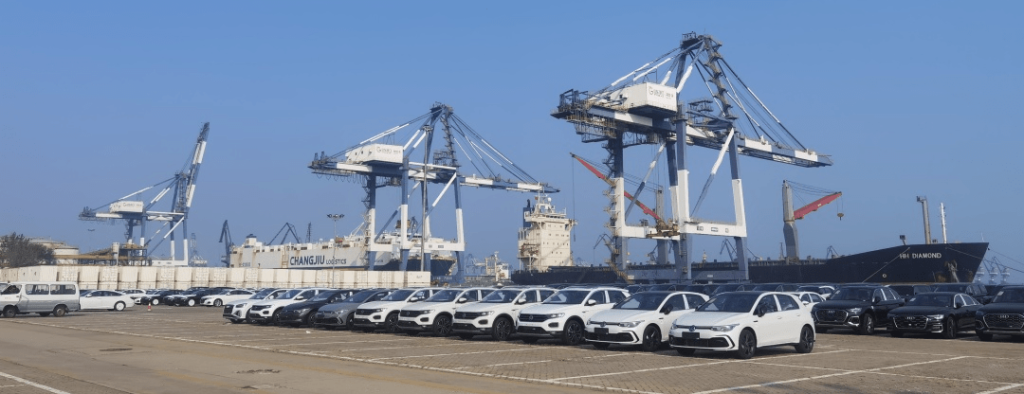
6. Post-Export Considerations
After arrival, ensure smooth last-mile delivery:
- Destination Handling: Partner with local agents for customs clearance and inland transport.
- Charging Infrastructure: Verify availability of EV charging stations at distribution centers.
- Reverse Logistics: Plan for battery returns or recycling in compliance with EU’s Battery Directive.
Conclusion: Partnering for Success
Exporting new energy vehicles demands a blend of regulatory expertise, transport mode optimization, and risk management. By leveraging specialized logistics solutions—whether through RoRo ships for efficiency or FCL containers for security—exporters can capitalize on the NEV boom while minimizing disruptions.
For businesses seeking end-to-end support, collaborating with a provider like Winsail Logistics (visit https://www.winsaillogistics.com) ensures access to global networks, compliance tools, and real-time tracking. As the NEV market evolves, proactive adaptation and strategic partnerships will define success in international trade.
Final Thought: The NEV export journey is complex, but with the right precautions and procedures, it becomes a sustainable pathway to global growth.
-
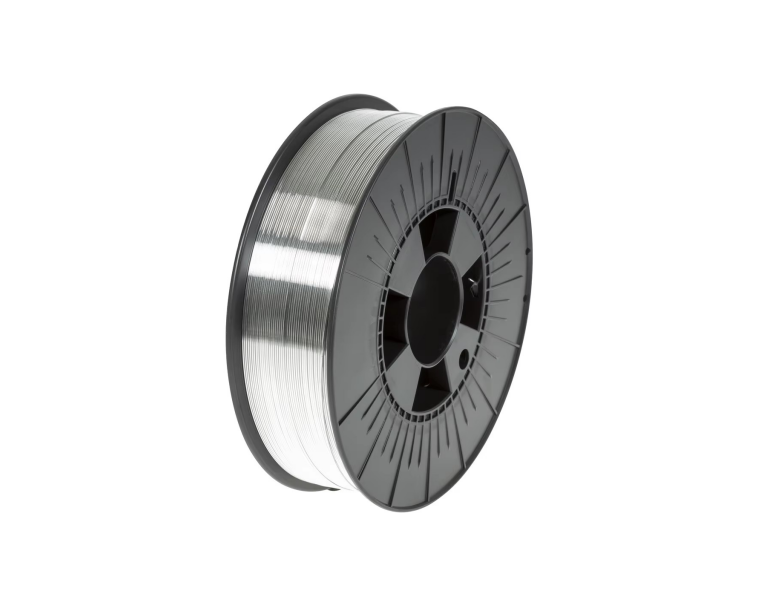 Ocean Lcl Freight Service Inconel 625 Wire from China to Chennai2025-09-30
Ocean Lcl Freight Service Inconel 625 Wire from China to Chennai2025-09-30 -
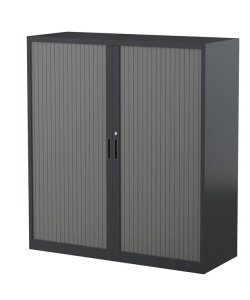 Ocean Freight Service Cabinet Door from China to Dar Es Salaam2025-09-29
Ocean Freight Service Cabinet Door from China to Dar Es Salaam2025-09-29 -
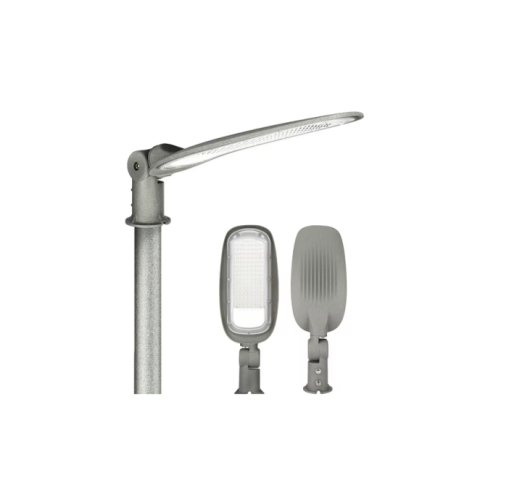 Door to Door by Ocean Freight Fixture Luminaries from China to Jeddah2025-09-28
Door to Door by Ocean Freight Fixture Luminaries from China to Jeddah2025-09-28 -
 Ocean Freight Service Sofa From China To Jebel Ali2025-09-26
Ocean Freight Service Sofa From China To Jebel Ali2025-09-26 -
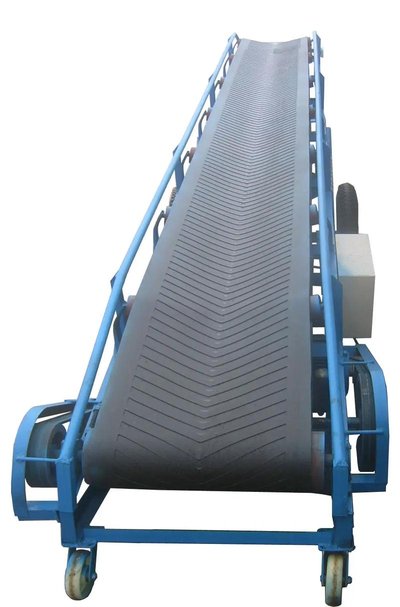 International Express Conveyor Belt From China To India2025-09-25
International Express Conveyor Belt From China To India2025-09-25 -
 Ocean Lcl Freight Service Medical Device From Shanghai to Jebel ali2025-09-25
Ocean Lcl Freight Service Medical Device From Shanghai to Jebel ali2025-09-25

